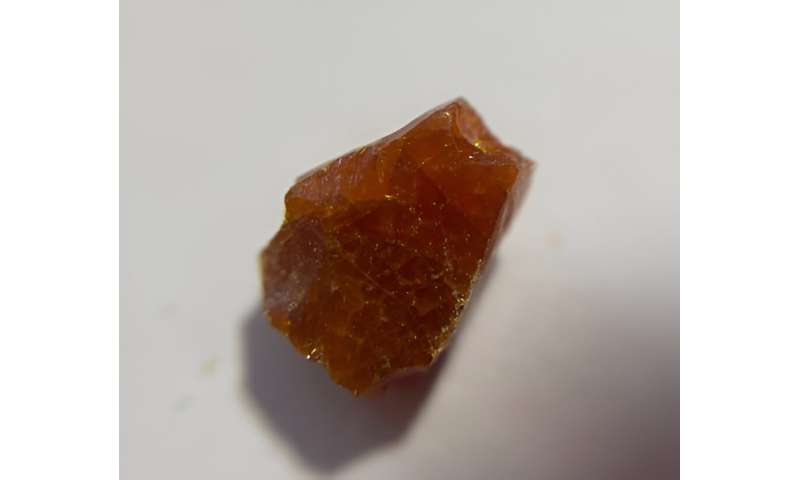Vibrational spectra will help to distinguish amber and amber-like resins

Scientists from Immanuel Kant Baltic Federal University obtained vibrational spectra for 15 samples of amber and resins, that imitate amber, from all over the world. Whereas samples, that were formed under the influence of different temperatures, pressure and other conditions, correlated with light not in the same way, their spectra could be distinguished as fingerprints. Thanks to this fact the data presented by authors can be used as a kind of standard in order to distinguish false gems and products from real amber. Results of the research are published in magazine Data in Brief.
Amber, the petrified tar, is used all over the world for production of jewelry, jewel boxes, watches and other everyday objects. As other jewelry, products from amber are often falsified through imitation of natural stone by epoxide and other resins and also by plastic. A proficient counterfeit can't be easily distinguished visually from a real amber, so scientists are elaborating more effective methods of identifying the originality of a stone.
Scientists from Immanuel Kant Baltic Federal University suggested to identify properties of amber with the help of IR and Raman spectroscopy. These methods are based on the fact that during transmission of light of a peculiar length through the sample molecules of a matter correlate with emission and begin to vibrate. According to the strength and frequency of these vibrations, the spectrum of transmission or dispersion of a sample is made, that is a kind of "fingerprint' with the help of which it is possible to identify the structure of the material, and also its chemical composition.
Researchers took spectra of 15 samples of amber and modern resins, that imitate it. By this samples differ as far as place of deposit and age is concerned. Thus, among them there were stones from Russia, U.S., Dominican Republic, Germany, Ukraine, New Zealand, Mexico and France. The age of samples varied from 60 thousand years to nowadays.
IR and Raman spectroscopy enabled to obtain spectra that were unique for each sample, the differences of those spectra were caused by conditions of formation of each stone.
"Correlation of amber or amber-like resin with light is influenced by the fact how a material was affected in the process of its formation – polymerization, condensation of structure, this or that pressure or temperature, and possibly, oxidation. These, generally speaking, are region specific proprieties, so resins from various countries differ from each other," – explains Andrey Zyubin, Candidate of Physical and Mathematical Sciences, head of the laboratory of mathematical modelling of optical proprieties of nanomaterials, senior research associate of Immanuel Kant Baltic Federal University, Research & Education Center "Fundamental and Applied Photonics. Nanophotonics.
As studied samples of amber originate from various regions of the world, specialists of corresponding countries can use obtained spectra in order to compare spectra of concrete products or resins with them, when it is necessary to prove their originality.
"We continue to work in this field – at the moment we making detailed research how properties of amber change depending on its age. By now we have taken spectra of 55 samples, so there is enough material for analysis. The collection of amber for the research was provided by Corresponding Member of the National Academy of Sciences of Belarus, Professor, Doctor of Science in Geology and Mineralogy of Brest State A.S. Pushkin University, Maksim Albertovich Bahdasarau", – concludes Andrey Zyubin.
The research is supported by grant of RSF № 23-22-10023 "Fundamental bases of elaboration of new method of estimation of relative age and geographic origin of mineral resins of the world on the example of Baltic amber".
More information:
Anna Kundalevich et al, Dataset on vibrational spectra of amber and amber-like resins, Data in Brief (2024). DOI: 10.1016/j.dib.2024.110478
Provided by Immanuel Kant Baltic Federal University